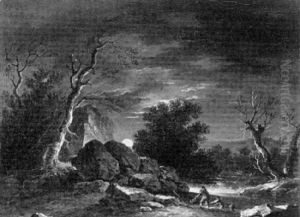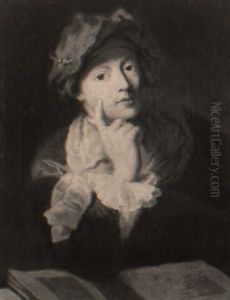Jean-Gaspard Heilmann Paintings
Jean-Gaspard Heilmann, born in 1740 in Wissembourg, France, was an 18th-century French painter whose work is less known to the general public but was nonetheless significant in the artistic circles of his time. Heilmann's artistic endeavors were primarily centered around his native region of Alsace, where he contributed to the cultural landscape through his paintings.
Heilmann's early life and training as an artist remain somewhat obscure, but it is known that he became proficient in both painting and engraving. His style was influenced by the Rococo movement, which was prevalent during his formative years, and by the emerging Neoclassicism that started to take hold towards the end of his career. Heilmann adeptly combined the lightness and grace of Rococo with the more structured and classical elements of Neoclassicism.
Throughout his career, Jean-Gaspard Heilmann received various commissions that allowed him to display his talents. He painted religious scenes for churches, created portraits for local patrons, and produced historical and mythological paintings. His works were characterized by their attention to detail, vibrant colors, and the delicate interplay of light and shadow.
Despite his skills and contributions, Heilmann did not gain widespread fame and his works were mostly recognized at a regional level. However, he was respected by his contemporaries and his art continues to be of interest to historians and collectors who study the artistic developments of the Alsace region during the 18th century.
Jean-Gaspard Heilmann passed away in 1810. Although he did not leave behind a vast oeuvre, his paintings that do survive offer valuable insights into the regional art scene of his time and the transition between major artistic movements in France. His work stands as a testament to the rich tapestry of local artistic expression during a period that was dominated by larger art centers like Paris.




